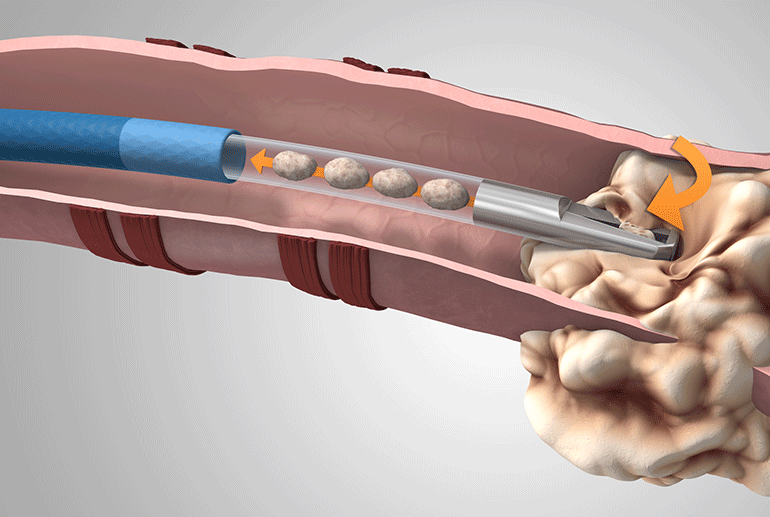Cancer is a terrifying disease that affects millions of lives worldwide. When a patient suspects that they may have cancer, one of the first steps doctors take is a biopsy - a medical procedure to remove cells or tissues from a person's body to be examined under a microscope. A biopsy helps determine if cancer or a precancerous condition is present and, if so, it helps identify the type and severity of the disease. In this article, we will discuss what a cancer biopsy involves, the different types of biopsies, and how biopsy results are used for diagnosis and treatment planning.
What is a Cancer Biopsy?
A biopsy is a simple medical procedure performed by a doctor, most often a surgeon, radiation oncologist or interventional radiologist, to remove a small sample of suspect tissue or cells from the patient's body. The sample is then sent to a laboratory where a pathologist uses a microscope to examine it. The pathologist looks for abnormal cells and signs that the cells may be cancerous. The presence, type and spread of cancer can be determined from a biopsy.
There are different types of biopsies depending on the area being tested and the preference of the doctor. Common biopsy methods include:
- Incisional biopsy: Removes only a part of the abnormal growth. Useful for lumps that seem larger than typical lesions.
- Excisional biopsy: Removes the entire growth during the procedure. More conclusive than an incisional biopsy but may delay diagnosis.
- Needle biopsy: Uses thin, hollow needles to remove fluid or very small tissue samples—usually from organs like breast, thyroid or prostate. Less invasive than surgical biopsies.
- Endoscopic biopsy: Uses a thin, lighted tube inserted into the body cavity or organ to visually inspect and collect samples from suspicious areas. Common for lung, gastrointestinal biopsies.
- Laparoscopic biopsy: Uses a thin, lighted tube with attached instruments and camera inserted through small incisions. Allows viewing inside body cavities like abdomen. Useful for hard-to-reach areas.
Planning the Biopsy Procedure
The type of Cancer Biopsy planned depends on factors like the medical history, suspected cancer type and location of the abnormality. Doctors consider which procedure would remove enough sample size for accurate diagnosis while keeping complications low.
Before the biopsy, doctors will discuss:
- Medical history, symptoms
- Type of biopsy and what it involves
- Risks like infection, bleeding
- Aftercare like activity restrictions, follow up appointments
Informed consent is obtained to ensure patients understand the planned procedure. Biopsies are usually done in a doctor's office, clinic or hospital on an outpatient basis under local anesthesia.
Analysis and Interpreting Biopsy Results
Once the samples are obtained, they are prepared and analyzed under a microscope by a pathologist. The pathologist looks for cellular changes and patterns that are indicative of benign or cancerous conditions. Immunohistochemical staining may be used to identify telltale markers on cells.
The pathologist prepares a report describing all findings like presence or absence of cancer, cancer type (such as cells originating from breast, prostate etc.), disease stage and other relevant details.
This information is essential for doctors to determine:
- Final diagnosis - whether cancer, precancer or non-cancerous
- Prognosis or expected disease course and chances of recurrence
- Treatment planning including surgery, chemotherapy and radiation
- Providing patients with realistic expectations and next steps
Biopsy results form the foundation of cancer management. Work ups and staging tests are then done based on biopsy conclusions. Biopsy thus plays a vital role in diagnosing and managing every cancer case.
Understanding Risks and Aftercare
While biopsies carry very low risks when done by experienced doctors, certain complications may occur in rare cases. Bleeding or infection at biopsy site is possible which patients should watch out for and report to doctors promptly. Rest and limited activities help prevent complications.
Discomfort at site is common for a day which can be eased with over-the-counter painkillers. Results usually take a few days to be reported but some are immediate. Follow up is essential to understand results, final diagnosis and treatment options. Biopsies have advanced cancer screening and care tremendously. Combined with other tests, biopsy remains the gold standard for confirming malignancies.
A biopsy is a simple yet critical test in evaluating possible cancers. It involves removal of suspect tissue under different techniques for microscopic examination by pathologists. Based on findings of cancer type, stage etc., biopsy guides doctors to the right diagnosis and management strategy. As cancers become more detectable and treatable, early biopsies play an important frontline role for patients. Understanding the procedure helps people make informed decisions about this integral medical investigation.
For more details on the report, Read- https://www.trendingwebwire.com/cancer-biopsy-growth-demand-and-overview/
Explore more related trending articles: https://coolbio.org/ventricular-assist-devices-providing-hope-for-heart-failure-patients/
